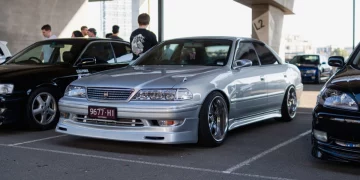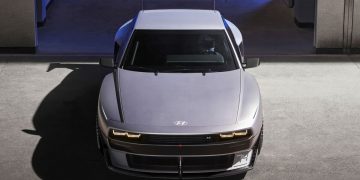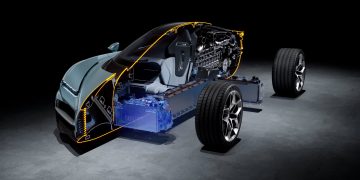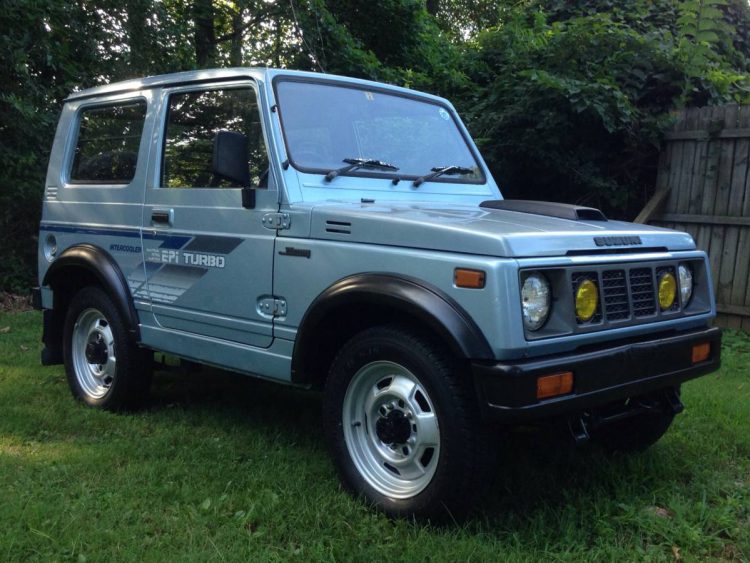In the intricate tapestry of automotive history, some concepts shine brightly only to fade before they can make their debut. One such tale is that of the Jeep “JJ,” an entry-level model conceived in the 1990s, poised to be a basic yet durable off-roader, much like the illustrious Suzuki Samurai.
A Vision of Affordability
The aspiration behind Jeep’s JJ was clear: to offer an accessible off-road vehicle that could capture the hearts of both novice adventurers and cost-conscious consumers. Inspired by the burgeoning success of the Suzuki Samurai, Jeep aimed to create a vehicle that not only met the demands of the adventurous spirit but also maintained economic viability. This new model, affectionately dubbed “Junior Jeep,” was envisioned as a simple yet robust alternative that could be easily manufactured and sold globally at a competitive price.
Designing the Future
The design phase was steered by Bob Nixon, Jeep’s chief designer at the time. The result was as imaginative as it was practical—a two-door convertible that elegantly blended function with familiar aesthetics. The iconic seven-slot grille, squared headlights, and amber turn signals recalled the essence of the Jeep lineage, incorporating elements reminiscent of the JL Wrangler. Unique details, such as low-set taillights and an integrated design where the lower fenders, front bumper, and roll bar flowed as one, gave the JJ its distinctive character. Boasting an 87-inch wheelbase, 63-inch width, and 131-inch length, the Jeep JJ promised a formidable presence on both road and trail.
Engineering a True Jeep
With design aspirations in place, engineers were tasked with ensuring the JJ upheld Jeep’s reputation for ruggedness. Utilizing readily available parts, the development team initially considered two Renault four-cylinder engines. However, after Chrysler’s acquisition of AMC in 1987, the focus shifted to the reliable 2.5-liter I4 paired with a five-speed manual transmission. To streamline production and reduce costs, an ingenious decision was made: the engine would be rotated 90 degrees to accommodate a single-speed transfer case, demonstrating a commitment to both quality and affordability.

A Bold Cost Strategy
Chrysler had ambitious pricing goals for the JJ, aiming for a retail price that would be significantly lower than that of the Grand Cherokee—potentially one-quarter to one-third less. The production strategy was equally innovative, comprising 13 modular components designed for assembly line efficiency, requiring minimal manual intervention. This dedication to simplification was intended to not only bring down manufacturing costs but also to foster reliability through streamlined processes.
Trials and Tribulations
Despite the visionary approach, the JJ’s journey was fraught with challenges. Designed to conquer the famed Rubicon Trail, the JJ ultimately faced scrutiny during testing. The project was marred by the belief among some engineers that it lacked the necessary off-road capabilities to earn the Jeep badge. A pivotal testing scenario revealed that the JJ struggled with a particularly steep section of the trail, demanding assistance rather than showcasing the legendary off-road prowess associated with Jeep.
Bob Sheaves, a former Jeep engineer, reflected on the trials: “It ultimately was deemed lacking as it could not make it over the Rubicon unassisted. The tire radius was insufficient for the technical challenges presented at a specific testing point.” The suggestion of fitting larger tires was explored, but concerns over compatibility halted the progression.
The Final Blow
As development progressed, discussions of introducing multiple body styles, including a four-door version, began to circulate. These additional variations caught the eye of Chrysler executives, leading to critical reevaluations of the JJ’s project scope and budget. Ultimately, the decision was made to divert resources to more profitable ventures, such as the upcoming Grand Cherokee, which promised a higher return on investment.
The story of the JJ concluded with the construction of sixty pre-production prototypes—a tangible testament to what could have been. While the fate of these prototypes remains a mystery, the dream of a true entry-level Samurai competitor faded into the annals of automotive history.
A Legacy Unfulfilled
Despite the sweeping changes and the ultimate cancellation of the JJ, the desire to create an accessible off-roading experience remained. Jeep would eventually attempt to populate the entry-level segment years later with the Compass and Patriot; however, these models fell short of capturing the genuine essence of the brand, leaving enthusiasts to wonder about the potential of the JJ and what it could have contributed to Jeep’s storied legacy.


































Discussion about this post